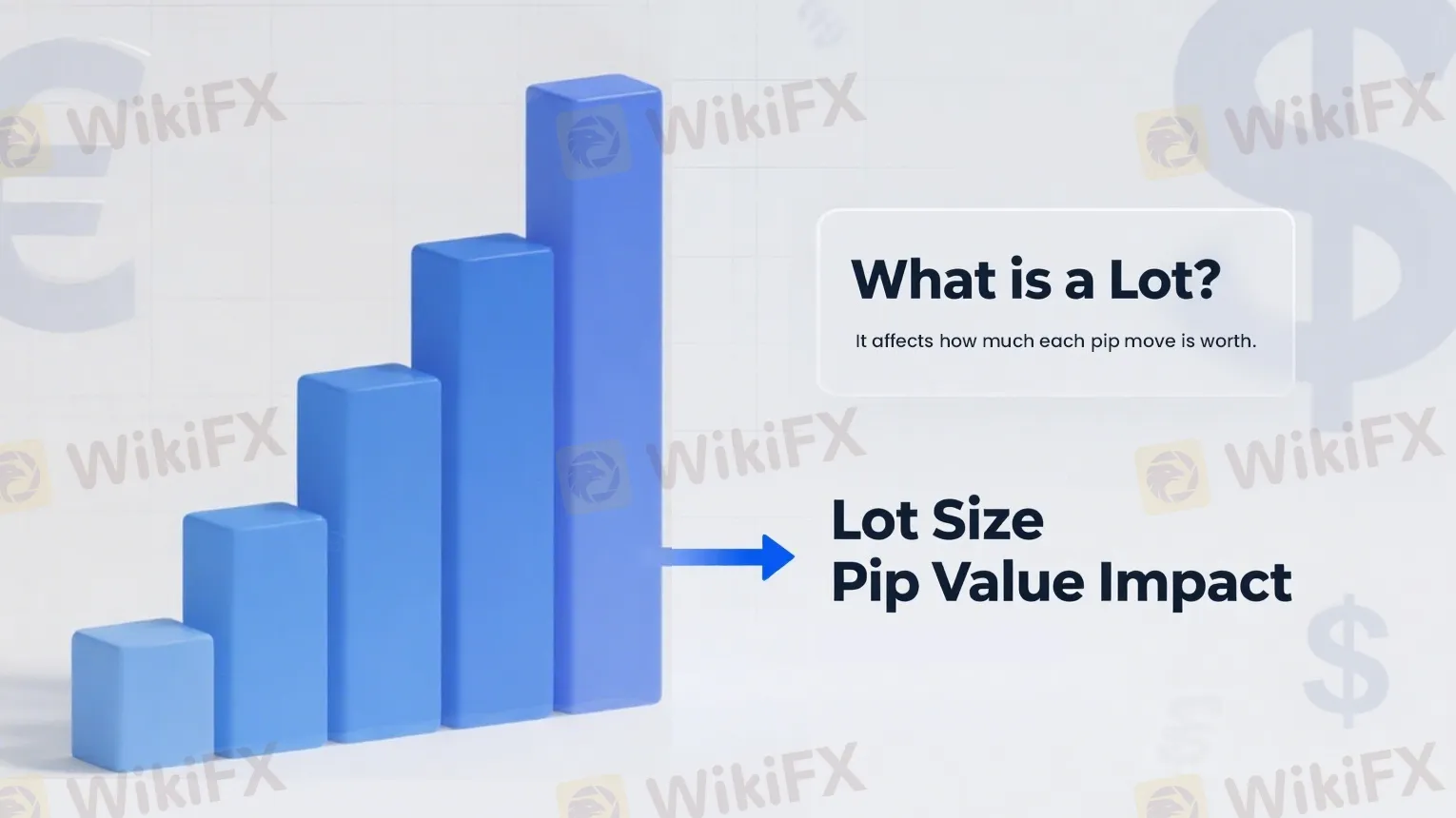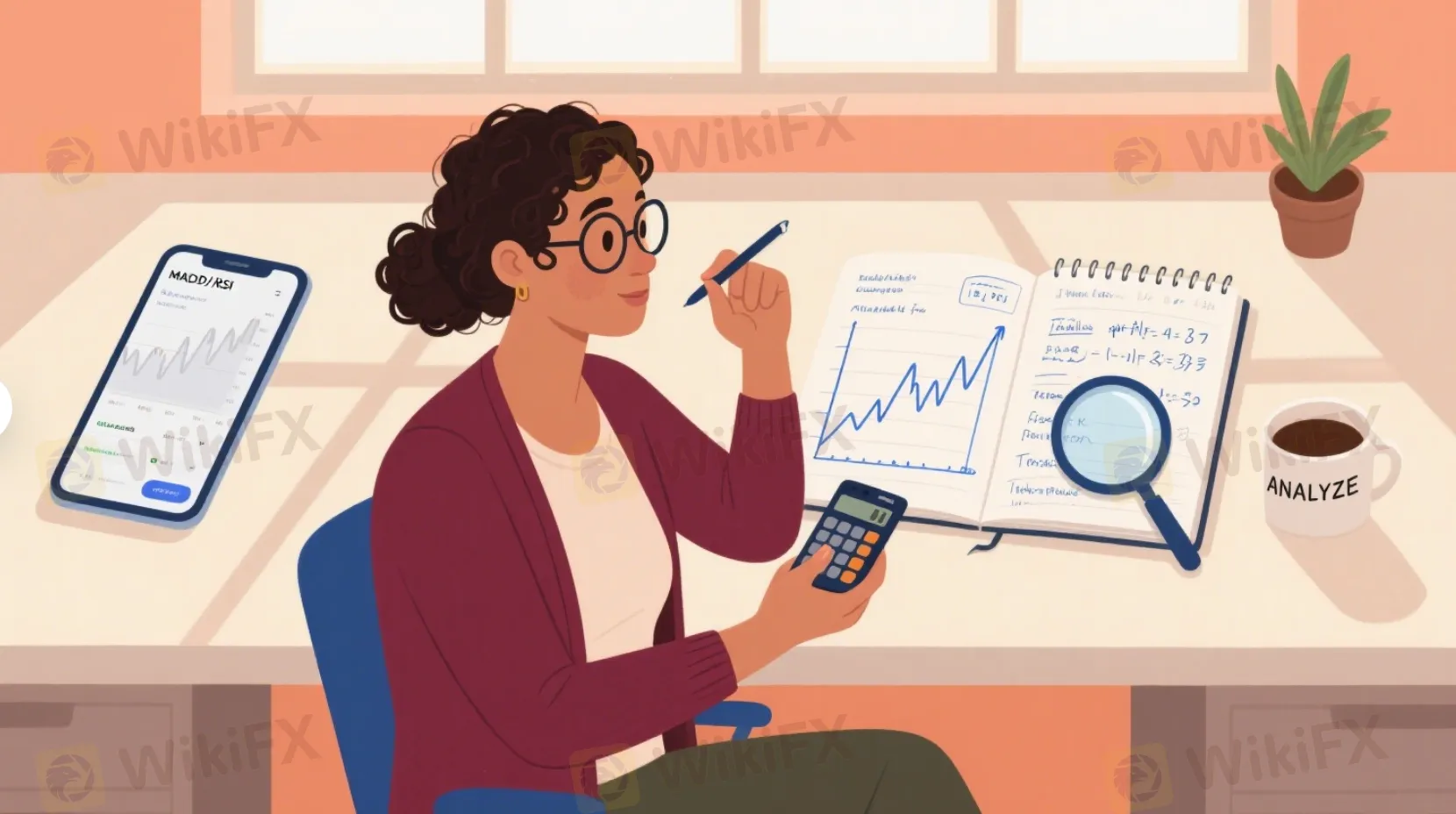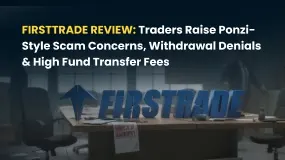简体中文
繁體中文
English
Pусский
日本語
ภาษาไทย
Tiếng Việt
Bahasa Indonesia
Español
हिन्दी
Filippiiniläinen
Français
Deutsch
Português
Türkçe
한국어
العربية
Pip Value Calculation Guide: How Much Is a Pip in Forex Really Worth?
Abstract:The journey from asking "how much is a pip in forex" to confidently executing risk-managed trades is significant. It marks the transition from casual speculator to serious, methodical trader. Pip value isn't trivia. It's the fundamental variable linking your strategy, account, and the market itself. Without this knowledge, you're trading blind. You can't accurately quantify risk or potential reward. But with it, you would gain control over the most important factor in long-term success: your financial exposure.
The Most Common Question
Every trader has one burning question: “How much is a pip in forex?” Here's the truth. There's no single answer. Pip value changes constantly.
The global currency markets dictate its worth through their complex movements. Understanding this concept transforms you from a market participant into a market strategist. Three key factors determine a pip's value: the currency pair you're trading, your position size, and the current exchange rate.
Many traders think a pip has a fixed value like a dollar or euro. This mistake leads to serious errors in risk management and profit assessment. A pip in EUR/USD has a different value than one in USD/JPY or GBP/AUD.
This guide will clear up the confusion. We'll move past vague definitions and give you precise knowledge. You'll know how much is one pip in forex for any trade you consider. By the end, you'll understand this fundamental concept completely.
You will learn:
- What a pip is and why it's the basic unit of profit and loss.
- Exact formulas to calculate pip value for any currency pair.
- How professional traders use pip value for risk management.
- A complete real-world example of calculating and using pip value in live trading.

The Building Blocks
Before calculating pip value, you must master market language. Understanding forex quotes and trade sizes is essential. These form the foundation of all risk and profit calculations.
What Exactly is a Pip?
A pip stands for “percentage in point” or “price interest point.” It's the smallest standard unit for measuring value changes between two currencies. It's the universal metric for expressing forex gains and losses.
For most currency pairs like EUR/USD, GBP/USD, or AUD/NZD, a pip is the fourth decimal place (0.0001). If EUR/USD moves from 1.0850 to 1.0851, that's a one-pip move.
Japanese Yen pairs are different. For JPY pairs like USD/JPY or EUR/JPY, a pip is the second decimal place (0.01). A move from 155.50 to 155.51 in USD/JPY is one pip.
Pips vs. Pipettes
Modern forex trading often shows prices with an extra decimal place. This fractional pip is called a pipette.
A pipette equals one-tenth of a pip. Brokers use pipettes for tighter spreads and more precise pricing. However, the pip remains the standard unit for trading discussions, calculations, and strategy development. We calculate risk and reward in pips, not pipettes.
What is a Lot?
You can't trade just one euro or dollar in forex. Currencies trade in standardized quantities called lots. Your lot size is your trade size. It directly affects how much each pip move is worth.

The relationship between lot size and pip value is crucial. Larger lot sizes mean each pip move has a greater impact on your account balance.
| Lot Type | Units of Base Currency |
| Standard Lot | 100,000 |
| Mini Lot | 10,000 |
| Micro Lot | 1,000 |
| Nano Lot | 100 |
Most retail traders use mini, micro, and nano lots. These allow for more flexible and precise risk management.
The Core Formulas
Now we reach the heart of the matter: actual calculations. Many trading platforms calculate pip value automatically. However, professional traders must understand the mechanics. This knowledge lets you verify broker figures and plan trades precisely before clicking buy or sell.
The Universal Pip Value Formula
The core formula for calculating pip value is straightforward. We'll use it as the foundation for all examples.
The base formula is: `Pip Value = (Pip in Decimal Places / Exchange Rate) * Units Traded (Lot Size)`
This formula applies differently depending on the currency pair structure. Specifically, where USD sits or if it's present at all. Let's break it down case by case.
Case 1: USD as Quote Currency
This is the most direct calculation. When the US dollar is the second currency in the pair, pip value calculates naturally in USD. Examples include EUR/USD, GBP/USD, and AUD/USD.
The formula simplifies because the result is already in the currency we need.
- Formula: `Pip Value (in USD) = Pip in Decimal Places * Units Traded`
- Example: Calculating pip value for 1 Standard Lot (100,000 units) of EUR/USD.
- Pip in Decimal Places: 0.0001
- Units Traded: 100,000
- Calculation: `0.0001 * 100,000 = $10.00`
Every one-pip move in a standard lot of EUR/USD equals exactly $10. For a mini lot (10,000 units), it's $1. For a micro lot (1,000 units), it's $0.10.
Case 2: USD as Base Currency
When the US dollar is the first currency in the pair, the calculation has an extra step. Examples include USD/CHF, USD/CAD, and USD/SGD.
The initial formula gives us pip value in the quote currency. We must convert this value back to USD using the current exchange rate.
- Formula: `Pip Value (in Quote Currency) = (Pip in Decimal Places / Exchange Rate) * Units Traded`
- Example: Calculating pip value for 1 Mini Lot (10,000 units) of USD/CAD.
- Current USD/CAD Exchange Rate: 1.3700
- Pip in Decimal Places: 0.0001
- Units Traded: 10,000
- Step 1: Calculate Pip Value in CAD: `(0.0001 / 1.3700) * 10,000 = 0.7299 CAD`
- Step 2: Convert to USD: `0.7299 CAD / 1.3700 (the USD/CAD rate) = $0.53`
For a mini lot of USD/CAD at this rate, each pip is worth approximately $0.53. Notice how this differs significantly from the fixed $1 per pip of a mini lot of EUR/USD.
Case 3: The JPY Pairs
Japanese Yen pairs require special attention. A pip is measured at the second decimal place (0.01). This changes the first variable in our formula.
Let's take USD/JPY as an example. This also falls under the “USD as Base” category, so conversion is necessary.
- Example: Calculating how much is 1 pip forex for 1 Micro Lot (1,000 units) of USD/JPY.
- Current USD/JPY Exchange Rate: 155.50
- Pip in Decimal Places: 0.01 (the key difference)
- Units Traded: 1,000
- Step 1: Calculate Pip Value in JPY: `(0.01 / 155.50) * 1,000 = 6.43 JPY`
- Step 2: Convert to USD: `6.43 JPY / 155.50 (the USD/JPY rate) = $0.041`
Each pip move on a micro lot of USD/JPY is worth about four cents at this rate.
Case 4: Cross-Currency Pairs
Cross-currency pairs don't involve the US dollar. Examples include EUR/GBP, AUD/NZD, or GBP/JPY. These often require the most steps to calculate USD pip value.
The initial calculation gives pip value in the quote currency. We must find the corresponding USD pair for that quote currency to make the final conversion.
- Example: Calculating pip value for 1 Standard Lot (100,000 units) of EUR/GBP.
- Current EUR/GBP Exchange Rate: 0.8500
- Current GBP/USD Exchange Rate (for conversion): 1.2500
- Pip in Decimal Places: 0.0001
- Units Traded: 100,000
- Step 1: Calculate Pip Value in GBP: `(0.0001 / 0.8500) * 100,000 = 11.76 GBP`
- Step 2: Convert to USD: `11.76 GBP * 1.2500 (the GBP/USD rate) = $14.70`
One pip on a standard lot of EUR/GBP is worth $14.70. That's far more than the $10 for EUR/USD. This critical difference directly impacts risk.
Beyond the Math
Understanding formulas is only half the battle. Professional traders apply this knowledge strategically. Pip value isn't an academic exercise. It's your most important risk management tool.
Failing to connect pip value to trading decisions destroys accounts. It's the bridge between trading ideas and responsible execution.
The #1 Beginner Mistake
The most dangerous mistake beginners make is choosing lot sizes arbitrarily. They might trade one mini lot on every trade, regardless of the currency pair or volatility. This approach means their actual dollar risk fluctuates wildly. A 50-pip stop-loss on EUR/USD might be $50 risk. The same 50-pip stop on EUR/GBP could be $73.50 risk. This inconsistency makes long-term account management impossible.
Professional trading builds on consistent risk. We achieve this by moving away from random lot sizes. Instead, we embrace risk-based position sizing. We decide our dollar risk first. For example: “I will risk no more than 1% of my account equity on any single trade.”
A Guide to Position Sizing
Using pip value, we can reverse-engineer trades to fit our risk parameters. This ensures that regardless of the pair or stop-loss distance, our dollar risk remains constant.
Here's the professional step-by-step process:
1. Determine Your Account Risk in Dollars: First, decide your maximum acceptable loss for the trade. If you have a $5,000 account and a 1% risk rule, your maximum risk is $50.
2. Determine Your Stop-Loss in Pips: Based on technical analysis, identify a logical price level for your stop-loss. The distance from your entry to this level is your stop-loss in pips. Let's say it's 30 pips.
3. Calculate the Required Value Per Pip: Divide your dollar risk by your pip risk. This tells you how much each pip can be worth to stay within your limit. In our example: `$50 risk / 30 pips = $1.67 per pip`.
4. Find the Correct Lot Size: Use the pip value formulas from the previous section. Find the lot size that corresponds to approximately $1.67 pip value for your specific pair. This crucial step connects everything.
Translating Pips to Dollars
A stop-loss or take-profit level set in pips is meaningless without knowing its dollar value. A “20-pip stop” isn't a risk management plan. It's a vague intention.
The monetary impact of that 20-pip stop depends entirely on your position size. Position size is determined by pip value. Let's look at GBP/USD to illustrate this. At a standard pip value of $10 per lot, the difference is stark.
| Trade Size | Stop-Loss | Dollar Risk |
| 1 Standard Lot (100k) | 50 Pips | $500 |
| 1 Mini Lot (10k) | 50 Pips | $50 |
| 1 Micro Lot (1k) | 50 Pips | $5 |
The table clearly shows that the same 50-pip stop-loss can represent a minor cost or devastating loss. This is why we never think in pips alone. We always translate pips into dollars using pip value. This helps us understand our true financial exposure on every trade.
Pip Value in Action
Theory is essential, but practical application solidifies knowledge. Let's walk through a complete trade scenario from idea to execution. We'll put all these concepts together.
We'll use GBP/JPY, a more complex pair, to demonstrate the full process. This includes specific rules for JPY pairs and cross-currency conversions. This is how professional traders think.
Step 1: The Setup
Before any calculation, we must define our trade parameters.
- Account Balance: $10,000
- Risk Tolerance: 1.5% per trade
- Maximum Dollar Risk: `$10,000 * 0.015 = $150`
- Trade Idea: Long GBP/JPY based on key support level holding.
- Entry Price: 190.50
- Stop-Loss Price: 190.00 (below the support level)
- Stop-Loss in Pips: `190.50 - 190.00 = 0.50`, which is 50 pips.
- Take-Profit Price: 191.50 (targeting recent resistance level)
- Take-Profit in Pips: `191.50 - 190.50 = 1.00`, which is 100 pips.
Our goal is to enter a trade where a 50-pip loss equals $150 risk.
Step 2: Calculating Pip Value
Now we must determine how much is 1 pip in forex for GBP/JPY in USD. This is a two-step process because it's a cross-currency pair.
First, we calculate pip value in the quote currency (JPY). We need the current exchange rate of the pair we're trading.
- Pair: GBP/JPY
- Exchange Rate (as of our analysis): 190.50
- Pip in Decimal Places: 0.01 (since it's a JPY pair)
- Calculation for 1 unit of currency: `(0.01 / 190.50) = 0.00005249 JPY`
Second, we must convert this JPY value into USD. We need the exchange rate for the USD/JPY pair.
- Conversion Pair: USD/JPY
- Exchange Rate (as of our analysis): 155.00
- Calculation: `0.00005249 JPY / 155.00 (USD/JPY rate) = $0.0000003386 per unit`
This tiny number is the USD value of a one-pip move for a single currency unit.
Step 3: Determining Position Size
We now have all pieces needed to calculate the correct position size. It must align with our $150 risk limit.
Let's calculate pip value for a mini lot (10,000 units) first:
- Pip Value in JPY (for 1 Mini Lot): `(0.01 / 190.50) * 10,000 = 5.249 JPY`
- Pip Value in USD (for 1 Mini Lot): `5.249 JPY / 155.00 (USD/JPY rate) = $0.643`
For every mini lot (10,000 units) of GBP/JPY, a one-pip move is worth approximately $0.643.
Now we can determine lot size:
- Required Value Per Pip: `$150 risk / 50 pips = $3.00 per pip`
- How many mini lots do we need? `$3.00 / $0.643 per mini lot = 4.66 mini lots`
This translates to 46,600 units, or 0.47 standard lots if we round up. We'll execute a trade for 0.47 lots.
Step 4: Final Confirmation
Let's confirm our final risk and reward in dollars with our calculated position size.
- Our chosen size: 0.47 lots (47,000 units).
- Pip Value for our size: `$0.643 per mini lot * 4.7 = $3.02 per pip`.
- Final Dollar Risk: `50 pips * $3.02/pip = $151.00`. This aligns perfectly with our $150 risk target.
- Potential Dollar Reward: `100 pips * $3.02/pip = $302.00`.
Our trade is now fully quantified. We're risking ~$151 to potentially make ~$302. That's a clear and acceptable 1:2 risk-to-reward ratio. We can execute the trade with full confidence in our risk parameters.
Mastering Your Trading
The journey from asking “how much is a pip in forex” to confidently executing risk-managed trades is significant. It marks the transition from casual speculator to serious, methodical trader. Pip value isn't trivia. It's the fundamental variable linking your strategy, account, and the market itself.
Without this knowledge, you're trading blind. You can't accurately quantify risk or potential reward. But with it, you would gain control over the most important factor in long-term success: your financial exposure.
Here are the most critical takeaways:
- Pip value isn't fixed. It's dynamic and depends on the currency pair, current exchange rate, and position size.
- Mastering simple formulas to calculate pip value for direct, indirect, and cross-currency pairs is essential for serious traders.
- True mastery isn't just calculation, but application. Use pip value to determine position size based on pre-defined dollar risk. This ensures consistency across all trades.
We encourage you to move beyond relying solely on platform indicators. Perform these calculations yourself before your next trade. This practice will build intuitive understanding of market dynamics and empower you to manage capital with the precision and professionalism it deserves.

Disclaimer:
The views in this article only represent the author's personal views, and do not constitute investment advice on this platform. This platform does not guarantee the accuracy, completeness and timeliness of the information in the article, and will not be liable for any loss caused by the use of or reliance on the information in the article.
Read more

Firsttrade Review: Traders Raise Ponzi-Style Scam Concerns, Withdrawal Denials & More Issues
Have you lost all your capital while trading via Firsttrade? Does the US-based forex broker disallow you from withdrawing funds? Do you have to pay massive fees when transferring funds? Does your trade get affected because of frequent malfunction in the trading app? These have been haunting many traders at Firsttrade. Consequently, many of them have raised complaints online. In this Firsttrade review, we have shared such complaints. Keep reading to know about them.

Defcofx Review: Spread Manipulation & Poor Customer Support Outrage Traders
Does the poor customer support service leave you stunned when trading via Defcofx? Do you receive blunt, negative responses from the support team on several trading queries? Does the Saint Lucia-based forex broker pile on the losses for you by manipulating forex spread charges? In this Defcofx review, we have shared some complaints made against the broker. This will further answer your question: Is Defcofx real or fake?

How to Add and Take Out Money from Amillex Broker: A Complete Guide
Good money management is the foundation of successful trading. Learning how to make an Amillex Broker deposit and withdrawal is your first step toward trading with confidence. We know that for any trader, moving money must be safe, fast, and simple. This guide gives you a complete, step-by-step walkthrough for all amillex broker funding activities, so you can manage your account with total clarity. The whole process, from your first deposit to taking out profits, is made to be simple. You start by logging into your secure client area, picking a payment method that works for you, choosing the amount, and confirming the transaction. This guide will cover detailed deposit instructions, a full breakdown of withdrawal steps, a comparison of available payment methods, and a detailed look at the security measures protecting every transaction.

MH Markets Overview: Fees, Platforms, and Regulation
Choosing a forex broker is an important step for any trader. With so many options available, the main question is always: is this broker a safe and effective partner for my trading goals? This review is designed to answer that question about MH Markets. We will examine the key parts of their service—regulation status, trading costs, platform features, and overall user experience—to give you a clear, complete picture. Our goal is to give you the information you need to decide if MH Markets fits your strategy and risk comfort level.
WikiFX Broker
Latest News
INTERPOL, AFRIPOL Crack Down on Africa Terror Finance
Forex Scam Checker Philippines: Verify Brokers with WikiFX
MH Markets Review 2025: Trading Platforms, Pros and Cons
Mekness Review: Traders Report Alleged Fund Scams & Account Blocks
Octa FX in Pakistan: The Complete Guide to Local Payments, Regulation, and Support
D Prime to Exit Limassol Office Amid Doo Group Restructure
WikiFX Elites Club Committee Concludes Voting! Inaugural Lineup Officially Announced
Fake Trading Platforms Are Spreading Fast Across Asia | How Investors Are Being Tricked
eToro CopyTrader Expands to U.S. Investors
Is MH Markets Safe or a Scam? Regulation and Fund Security Explained
Currency Calculator



